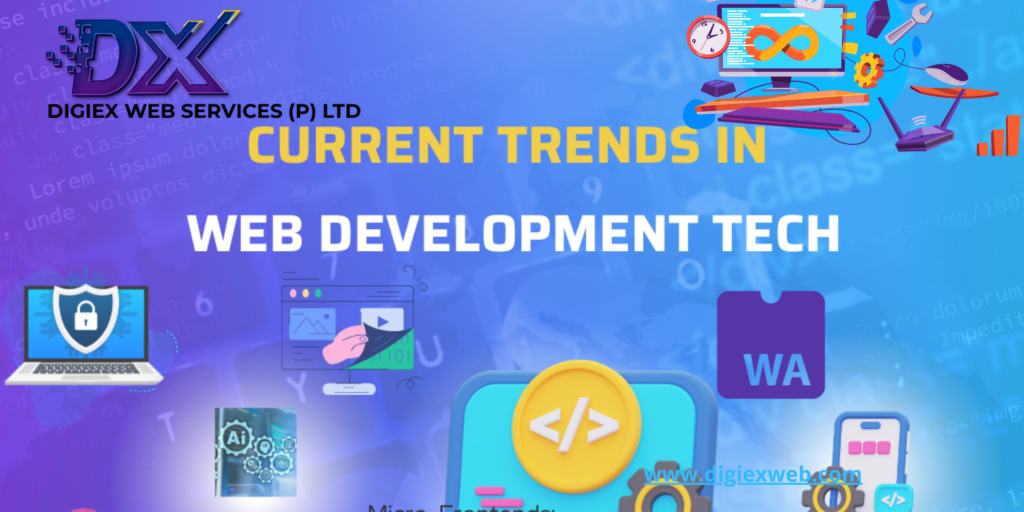Home / Blog



Current Trends in Latest Web Development Technologies (2024)
1. Artificial Intelligence (AI) and Machine Learning (ML) Integration: AI and ML are increasingly being embedded into websites to enhance user experience. From chatbots that provide 24/7 customer support to personalized content recommendations, AI-driven solutions are helping businesses deliver tailored experiences to users. AI is also playing a role in automating testing, security, and web design processes.
2. WebAssembly (Wasm): WebAssembly is revolutionizing web performance by allowing developers to run high-performance applications in the browser at near-native speeds. It enables code written in different languages like C++, Rust, and Python to be executed in the browser, making complex applications like games, video editors, and simulations run efficiently on the web.
3. Jamstack Architecture: Jamstack (JavaScript, APIs, and Markup) is becoming the go-to architecture for building fast, secure, and scalable websites. This approach decouples the front end from the backend, allowing developers to build static sites with dynamic capabilities. Jamstack enhances performance, security, and developer experience by leveraging pre-rendered pages served directly from a CDN.
4.Progressive Web Apps (PWAs): PWAs continue to gain traction due to their ability to provide a native app-like experience on the web. They offer offline capabilities, push notifications, and the ability to be installed on the user’s device without the need for an app store. PWAs are becoming a preferred choice for businesses aiming to deliver high-quality mobile experiences without the cost of native app development.
5. Micro-Frontends: Inspired by microservices, micro-frontends allow teams to build and deploy independent parts of a front end, which can be integrated into a cohesive application. This trend is particularly popular in large-scale applications where modularity, flexibility, and independent deployments are crucial for rapid development.
6. Serverless Architecture: Serverless computing is gaining momentum as it allows developers to build and deploy applications without managing server infrastructure. By leveraging cloud services like AWS Lambda, Azure Functions, and Google Cloud Functions, developers can focus on writing code while the cloud provider handles scaling, patching, and server management.
7. Motion UI: As user experience becomes a priority, Motion UI is gaining popularity for creating engaging and interactive web experiences. Subtle animations, transitions, and micro-interactions are used to guide users through interfaces, enhance storytelling, and make websites more dynamic.
8. GraphQL: GraphQL is increasingly preferred over REST APIs due to its efficiency in fetching data. It allows clients to request exactly the data they need, reducing over-fetching and under-fetching issues. This leads to faster and more flexible data retrieval, which is crucial for complex web applications.
9. No-Code and Low-Code Development: These platforms are democratizing web development by allowing non-developers to create functional websites and applications with minimal coding. Tools like Webflow, Bubble, and Wix are empowering small businesses and startups to quickly build and launch web products without deep technical expertise.
10. Enhanced Cybersecurity Measures: With rising cyber threats, web developers are focusing on security-first designs. Integrating security practices like Content Security Policy (CSP), HTTPS, and multi-factor authentication (MFA) has become standard. Web developers are also utilizing AI-based security solutions to identify and mitigate threats in real time.
These trends highlight the rapid evolution of web development technologies, focusing on performance, security, user experience, and accessibility to keep up with the demands of modern users and businesses.